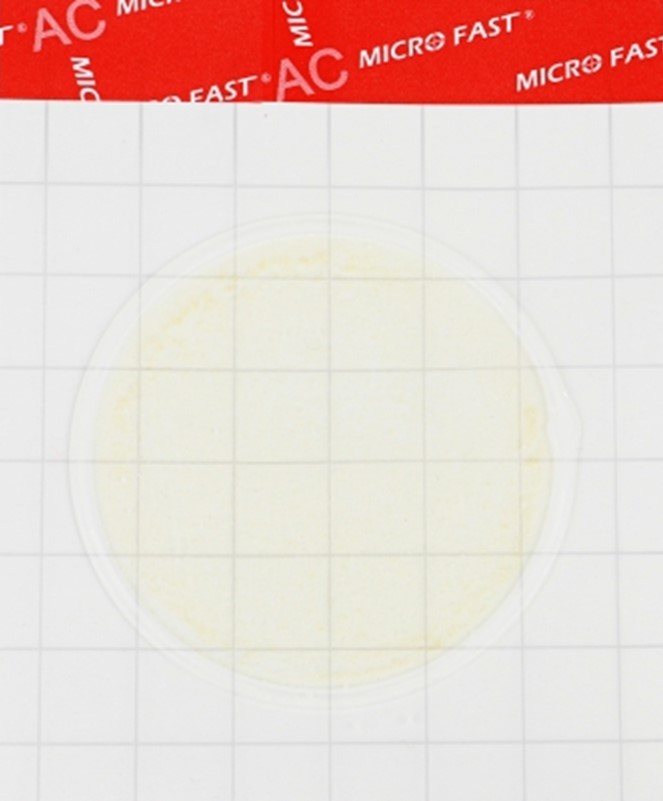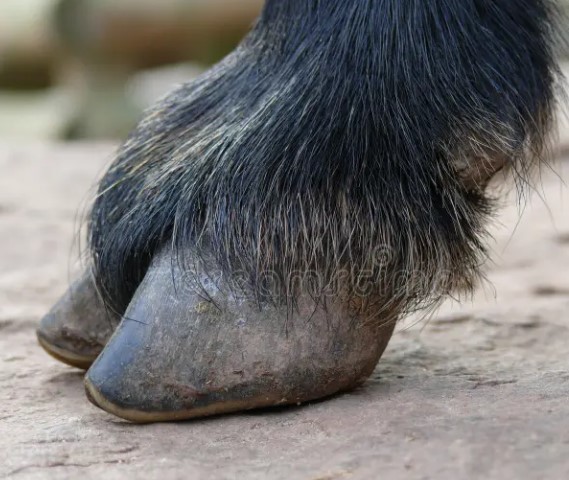What kind of meat do Russians prefer to eat?

According to Rosstat, a resident of our country consumes 78 kg of Meat and meat products per year, that is, this figure takes into account sausages, frankfurters, and other products. This is data for 2022; we haven’t yet had time to calculate what we ate last year. But according to Andrei Dalnov, Head of the Center for Industry Expertise of Rosselkhozbank, by the end of 2023, meat-eaters have pushed themselves harder and surpassed the bar of 80 kg per person, and even more is predicted this year. Moreover, over the past 20 years, meat consumption has almost doubled: from 41 kg. Let's get up from our knees and grab a knife and fork!
“The main reason for this increase in meat consumption was, of course, the increase in the income level of the population not only with high consumption, but also those classified as low-income due to targeted state social support,” Dinara Vasbieva, associate professor at the Financial University under the Government of the Russian Federation, told RBC Life.
By the way, the most notorious meat eaters in the world live in the USA: the average American accounts for 101.2 kg of meat per year. Maybe in five years we will catch up and surpass America.
Favorite food
The main meat in Russia is chicken; the average resident of our country eats 35 kg per year. Here we are not original: this is generally the most popular meat in the world. Legs and wings are, of course, delicious, but the price is much more important in this case, because chicken is the cheapest source of protein. And continues to be so.
According to the same Rosstat, goods in the category “chilled and frozen chicken” increased in price from 2014 to 2020 by less than 7% - a meager increase over so many years. True, now we can only remember this, because in 2023 prices rose not only for eggs , which everyone seems to remember, but also for chicken meat. Over the year, the bird “flew up” by 27.7%.
“The poultry industry of our country was focused on import supplies: hatchery eggs, day-old chicks, vitamin supplements for poultry feed, antibiotics ,” explains Khadzhimurad Belkharoev, associate professor at the Institute of World Economy and Business of RUDN, explaining the reason for the rise in prices. — IT is especially necessary to highlight internal factors: volatility in the foreign exchange market, rising energy costs, salaries of poultry farm employees, the cost of borrowed money, duties and tax deductions, transportation costs — all these factors determine the cost of the final product. Due to the lack of profitability, poultry farms in our country have gradually begun to close; over the past two years, about 12% of production has been mothballed - these capacities need to be put into economic circulation. In general, the industry requires government support on a long-term basis.”
They planted a pig
The most interesting trend in the meat diet of Russians is the popularity of pork. Its averageRussians eat almost 30 kg per year - less than chicken, but three times more than the Ministry of Health recommends . And this despite the fact that in Russia there are many regions with a predominantly Muslim population, where pork, for obvious reasons, is not popular.
According to Andrey Dalnov, in 2023, pork consumption has already come very close to chicken consumption, and this year it may even exceed them.
“In 2024 , given a favorable epidemiological situation, we will see a stable, diversified market where manufacturers will fight for the consumer’s stomach. At the same time, broiler and pork will share primacy as the most familiar sources of animal protein to consumers,” the expert noted.
And again, as with chicken, a lot can be explained by price - in the case of pork, it is quite stable. Manufacturers, speaking about this, nod towards the state - they say that officials are vigilant and keep a vigilant eye on socially significant products.
“Several years ago there was a sharp jump in the cost of pork, including due to rising production costs,” recalls the head of the Lazarevskoye agricultural holding, Kristina Romanovskaya. “This was followed by a lightning-fast reaction from the state and measures to increase quotas for the import of foreign products. The shift in the supply and demand curve quickly brought gamblers to their senses, and prices fell as sharply as they had risen. The system is now maintained in balance.”
And once the buyer votes with rubles for a more affordable product, the basic market mechanism is activated - demand creates supply.
“Demand has become the foundation for the development of technologies for raising animals and increasing the number of agricultural producers, and competition, as we know, ensures a constant improvement in the quality of products,” says Romanovskaya. According to her, in farms of all categories at the end of November 2023, the number of large and small ruminants decreased by 1.7%, and pigs increased by 1.5% compared to last year.
Road beef for dinner
Let's get nostalgic: 20 years ago, a kilogram of beef could be bought for 93 rubles 41 kopecks. At least these are the results of Rosstat’s calculations based on the results of 2004. For comparison, in 2023 the statistical agency already calculated 519.83 rubles per kilo.
According to the National Rating Agency, in January 2023, the average price per kg of beef was 59% higher than the price of pork and 2.76 times higher than poultry meat . For comparison: in January 2006, beef was 12% cheaper than pork and only one and a half times more expensive than chicken. The situation changed fundamentally back in 2011 - beef became more expensive than pork and has only become more expensive since then.
It is not surprising that in this situation, its consumption fluctuates around 10 kg per year, and for the last couple of years we have not reached this round figure.
Manufacturers assure that beef should not be cheap.
“A cow carries a calf for almost nine months, during which time one sow can have up to 14-16 piglets. Then you need to raise the calf, which is about one and a half years. That is, the process of producing beef is much longer and more complex than pork. In this regard, the price is higher,” explains Dmitry Popov, commercial Director of the Progress Agro group of companies.
“The payback period for creating a new farm is at least 10 years, this is not exactly a business story,” added Kristina Romanovskaya. “Few people can afford to enter into such a project, which is why the level of competition in our country is low.”
The number of livestock is declining, including due to rising prices for feed and veterinary drugs.
“In addition, today about 25% of beef is imported. In 2023, the quota for duty-free import of beef into Russia was 100 thousand tons, compared to 200 thousand tons in 2022, i.e. the decrease in the volume of cheap imported meat affected the rise in price of beef on the domestic market,” noted Dinara Vasbieva.
Not the healthiest diet
From a nutritional point of view, meat, whether chicken or beef, is characterized by its fat and saturated fatty acid (SFA) content. In a healthy diet, the share of the former should not exceed 30%, and the share of the latter should not exceed 10%. But as research shows , the average Russian’s plate contains 38% fat and 14.5% SFA. The numbers may not look all that impressive, but experts are confident that this is a significant contribution to the excess caloric intake that occurs in all groups of the population. The result is predictable and merciless, like a scale reading - almost ⅔ of Russians (62%, to be exact) are overweight.
According to the recommendations of the Ministry of Health, a healthy diet for a year should include 14 kg of beef, only 10 kg of pork and 40 kg of chicken. In total, doctors advise eating 74 kg of meat and meat products - this includes the recommended 5 kg of beef, and the same amount of “meat of other animals,” for example, horse meat or venison. Here it is pork that attracts attention - we consume it three times more than recommended.
“Pork is a significantly fattier meat than lean beef. Of course, it is better and healthier to reduce the amount of pork consumed in your diet. It is precisely because of the excess of saturated fats that our country has high rates of cardiovascular diseases, diabetes, and obesity,” Alexey Kabanov, deputy director of the National Research Center “Healthy Nutrition,” told RBC Life.
But the beef is clearly not reported to the Russians: according to statistics, we eat almost one and a half times less than what the Ministry of Health recommends. And experts don’t see anything good in this.
“The fact is that it is rich in highly digestible divalent iron, the consumption of which is very difficult to replace with other products,” nutritionist Marina Tarantul explained to RBC Life. — In plant foods, iron is contained in a trivalent state, the digestibility of which is almost three times worse than divalent “beef”. Thanks to this, one hundred grams of beef meat provides almost 15% of the body’s daily requirement for iron.”
However, there is no fundamental difference between pork and beef.
“If you compare the nutrient composition of pork and beef, they are very similar. Yes, there may be slight differences in the amount, for example, of protein, iron, zinc, vitamin B12, but this very much depends on the part of the carcass, on the specific piece of meat,” nutritionist Nastasya Kostina told RBC Life. — The content of various amino acids, including essential ones, in these types of meat is also very similar. There are differences, but this is not fundamental for health if a person does not exceed the recommended standards for the amount of red meat in general.”
If we talk about harm to health, then it is not the disproportion between different types of red meat that is dangerous, but its total amount in the diet.
“According to international dietary recommendations, it is advisable for a person to eat no more than 350-500 grams of cooked red meat per week (in raw form this is approximately 500-750 g). And this could be beef, pork, lamb , or any other red meat. Personal taste preferences are more important here,” Kostina notes. — But too much red meat in the diet is associated with an increased risk of cancer. For the same reason, it is recommended to eat as little processed red meat as possible, that is, sausages, sausages, smoked meats, etc.”
Read together with it:
- США ослабили контроль над санкциями против российских алмазовНегативная реакция на запрет импорта российских алмазов со стороны отрасли вынудила США пересмотреть санкции, выяснил Reuters. По данным агентства, больше всего претензий выражали индийские огранщики и африканские страны Соединенные Штаты в настоящее время пересматривают самые строгие элементы санкц...
- Как Азербайджан оказался причастен к мятежу в Новой КаледонииВ Новой Каледонии, французской заморской территории в 17 тыс. км от Парижа — массовые беспорядки. Французы ввели туда войска и обвинили Азербайджан в провоцировании мятежа Почему в Новой Каледонии начались беспорядки Новая Каледония, французская заморская территория, уже несколько дней как охвачена ...
- Экспорт продукции АПК Вологодской области составил почти 1,5 млрд рублей за 4 месяца 2024 годаВ регионе подвели итоги экспорта продукции агропромышленного комплекса с начала этого года. «По предварительным статистическим данным, за первые 4 месяца 2024 года экспорт продукции АПК Вологодской области составил 16 миллионов долларов США или почти 1,5 миллиарда российских рублей. Традиционно в сп...
- В Нижегородской области открылась роботизированная фермаВ открытии нового молочного комплекса в Уренском муниципальном округе приняли участие губернатор Нижегородской области Глеб Никитин, министр сельского хозяйства и продовольственных ресурсов Нижегородской области Николай Денисов. Строительство роботизированного молочно-товарного комплекса на 1 052 го...



























































